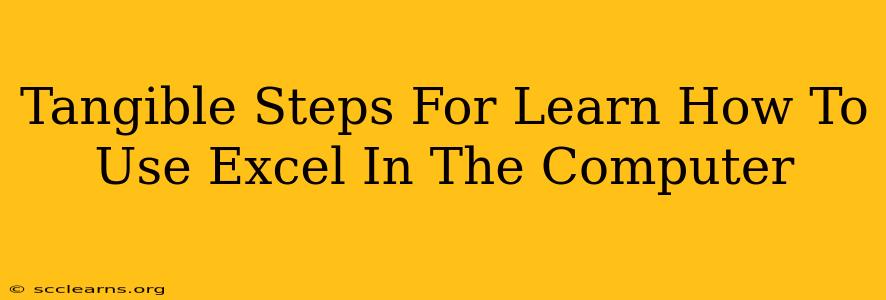Microsoft Excel is a powerful tool used across various industries and professions. Mastering Excel can significantly boost your productivity and open doors to new opportunities. This guide provides tangible steps to help you learn how to use Excel effectively, moving from beginner to proficient.
Getting Started: The Excel Interface
Before diving into formulas and functions, familiarize yourself with the Excel interface. Understanding the ribbon (containing tabs like "Home," "Insert," "Data," etc.), the formula bar, the sheet tabs, and the navigation pane is crucial. Spend some time simply exploring these elements. Don't be afraid to click around; you won't break anything!
Key Areas to Explore:
- Ribbon: This houses all the commands and tools organized by category.
- Formula Bar: This is where you enter and edit formulas and data.
- Sheet Tabs: These allow you to navigate between different worksheets within a workbook.
- Navigation Pane: This helps you quickly locate specific cells or ranges.
Basic Excel Skills: Data Entry and Formatting
Start with the fundamentals. Learn how to:
- Enter Data: Input numbers, text, and dates into cells.
- Format Cells: Change font styles, sizes, colors, number formats (currency, percentages, dates), and alignment. This makes your spreadsheets look professional and easy to read.
- Select Cells and Ranges: Learn how to select single cells, rows, columns, and blocks of cells efficiently using your mouse or keyboard shortcuts. This is crucial for applying formatting and formulas.
- AutoFill: Use this feature to quickly fill in sequential numbers, dates, or repeating text.
Practice Tip: Create a simple spreadsheet, like a personal budget or a to-do list, to practice these basic skills.
Intermediate Excel: Formulas and Functions
Once you're comfortable with the basics, move on to formulas and functions. This is where Excel's true power lies.
Essential Formulas:
SUM(): Adds a range of numbers.AVERAGE(): Calculates the average of a range of numbers.COUNT(): Counts the number of cells containing numbers.MAX()andMIN(): Find the highest and lowest values in a range.IF(): Performs a logical test and returns different values based on the result. This is a powerful function for conditional logic.
Mastering Functions:
Start with these essential functions and gradually explore more advanced ones as your skills improve. Online resources and tutorials offer countless examples and explanations.
Practice Tip: Try recreating simple calculations from your daily life using Excel formulas. For example, calculate your monthly expenses or the total cost of groceries.
Advanced Excel: Charts, Graphs, and Data Analysis
As you progress, learn to visualize your data using charts and graphs. This is a critical skill for presenting your findings effectively.
Chart Types:
Experiment with different chart types, such as bar charts, line graphs, pie charts, and scatter plots, to find the best visual representation for your data.
Data Analysis Tools:
Explore Excel's data analysis tools, including sorting, filtering, and pivot tables. These features allow you to extract meaningful insights from large datasets.
Resources to Help You Learn
Numerous resources are available to help you learn Excel:
- Online Tutorials: Websites like YouTube, Udemy, and Coursera offer countless free and paid Excel tutorials.
- Microsoft's Official Documentation: Microsoft provides comprehensive documentation on Excel's features and functions.
- Practice Workbooks: Find practice workbooks online to test your skills and reinforce your learning.
Conclusion: Embrace the Journey
Learning Excel is a journey, not a race. Start with the basics, gradually build your skills, and don't be afraid to experiment. The more you practice, the more confident and proficient you'll become. With dedication and persistence, you'll soon be mastering this powerful tool and reaping its benefits. Remember to regularly practice and apply what you learn to real-world scenarios to solidify your understanding. Good luck!

